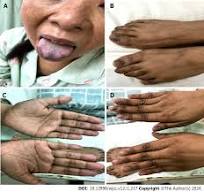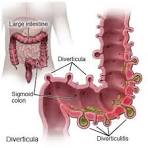INTRODUCTION:
HEALTH IS WEALTH-Natural remedies have been a cornerstone of healing for centuries, long before
the advent of modern pharmaceuticals. Across cultures and civilizations, people
have relied on nature’s gifts—herbs, roots, fruits, and holistic practices—to
restore health and vitality. While this encyclopedia does not seek to undermine
the importance of medical science, it aims to complement it by shedding light
on time-tested natural solutions. It encourages further research into the power of
nature in healing, offering insights into remedies that have provided relief to
countless individuals.
Beyond addressing sickness and disease, true wellness involves prevention and
proactive care. This is why this encyclopedia also includes exercises and fitness
routines designed to strengthen the body, boost immunity, and enhance overall
well-being. A balanced lifestyle, proper nutrition, and regular physical activity
are essential components of good health, and this resource serves as a guide to
achieving and maintaining it naturally.
NATURAL REMEDIES FOR AUGULAR CHEILITIS
Angular cheilitis, a condition characterized by painful cracks or sores
at the corners of the mouth, can have various causes, including fungal
or bacterial infections, nutritional deficiencies, or irritation. Here are
some natural remedies and herbs that may help alleviate the symptoms
associated with angular cheilitis:
1. Honey:
How it works: Honey has natural antimicrobial and wound-
healing properties that can help combat infections and promote
skin repair.
Preparation: Apply raw, organic honey directly to the affected
area a few times a day. Leave it on for about 15–20 minutes before
rinsing off with warm water.
Where to find: You can find honey at your local grocery store or
health food store.
2. Aloe Vera Gel:
How it works: Aloe vera has soothing and healing properties that
can help reduce pain and inflammation.
Preparation: Extract the gel from a fresh aloe vera leaf and apply
it directly to the affected area. Repeat this 2–3 times a day.
Where to find: You can find aloe vera leaves or gel in most
health food stores or local markets close to you.
3. Coconut Oil:
How it works: Coconut oil is rich in antimicrobial fatty acids that
can help combat fungal and bacterial infections.
Preparation: Apply a small amount of virgin coconut oil to the
affected area several times a day.
Where to find: Use high-quality, organic coconut oil, available
in many local markets close to you.
4. Tea Tree Oil (Diluted):
How it works: Tea tree oil has natural antifungal and
antibacterial properties that can help address the underlying
causes of angular cheilitis.
Preparation: Mix a few drops of tea tree oil with a carrier oil like
coconut or olive oil (to prevent skin irritation), and then apply it
to the affected area 2–3 times a day.
Where to find: Tea tree oil can be found in health food stores or
local markets close to you.
5. Probiotic Yogurt:
How it works: If the cause of angular cheilitis is fungal in nature,
consuming probiotic yogurt can help restore the balance of
beneficial bacteria in the body.
Usage: Include plain, unsweetened probiotic yogurt in your diet
regularly to promote gut health and potentially reduce the risk of
fungal infections.
6. Iron and B Vitamin Supplements (Consult a healthcare provider
first):
How they work: Angular cheilitis can sometimes be linked to
nutritional deficiencies, such as iron or B vitamins (like B2 or
riboflavin). Supplements can help correct these deficiencies.
Usage: Consult with a healthcare provider to determine if you
have a deficiency and to receive proper guidance on supplement
dosages.
7. Maintain Good Oral Hygiene:
How it works: Keeping the affected area clean and dry, and
practicing good oral hygiene, can help prevent further irritation
and infection.
Usage: Brush your teeth gently with a soft toothbrush, use an
alcohol-free mouthwash, and avoid excessive licking of the lips.
Key Consideration:
It’s essential to consult with a healthcare professional or dermatologist
to determine the underlying cause of your angular cheilitis and to
receive proper treatment recommendations. These natural remedies can
help alleviate symptoms, but they may not address the root cause in all
cases. Always ensure that you are not allergic to any of these remedies
and discontinue use if you experience any adverse reactions.



